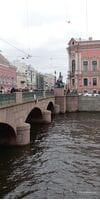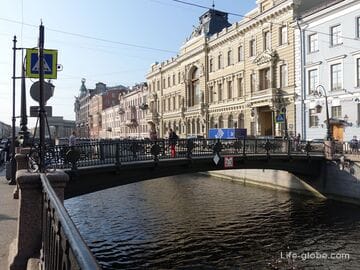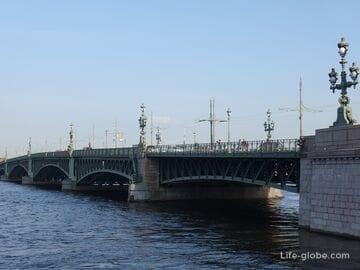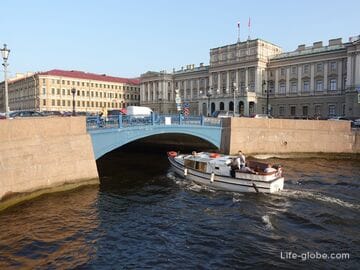Anichkov Bridge is one of the most famous bridges in St. Petersburg.
On the bridge there are sculptural groups of horse tamers by Peter Klodt, which are one of the recognizable symbols of the city.
The bridge is designed for the movement of vehicles and pedestrians.
Anichkov Bridge runs across the Fontanka River and connects the Spassky and Bezymyanny Islands.
The bridge is located in the central district of St. Petersburg, in the alignment of Nevsky Prospekt-one of the most visited and beautiful streets of the city.
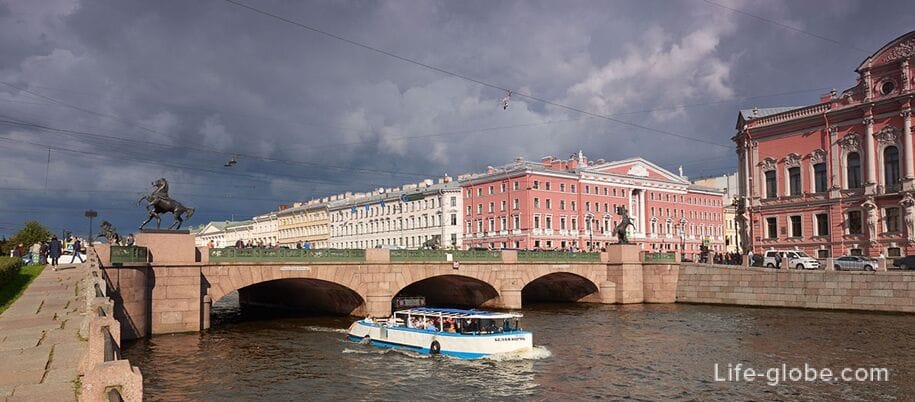
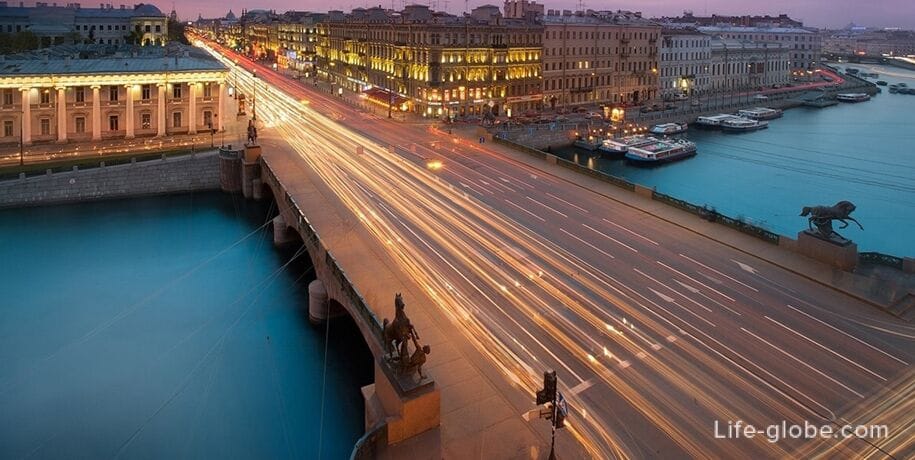
The name" Anichkov " bridge was named after the builder of the first bridge at this place-Engineer-Lieutenant Colonel M. O. Anichkov. Prior to the construction of the bridge, under the leadership of the same engineer, the Anichkov sloboda, which was built under Peter I by the workers ' battalion, was created adjacent to the bridge.
The bridge was built in 1712-1714 and was the first bridge over the Fontanka River, which at that time was called Erik or Unnamed Erik.
Initially, the bridge was made of wood, about 150 meters long, and the width of the bridge allowed only one cart. The bridge supports were piled.
Subsequently, the bridge was rebuilt and strengthened several times. During the history, from 1721 to 1749, the bridge had a lifting part for the passage of small ships and barges. From 1739 to 1747, the bridge was called "Nevsky".
The design of the Anichkov Bridge, which can be seen today, was born in 1841 according to the project of engineer Major Ivan Fedorovich Buttats. The project of the bridge was approved by Emperor Nicholas I.
Today, the Anichkov Bridge is a three-span structure in the form of three shallow arches, laid out of brick, on stone supports and faced with granite. A cast-iron fence of artistic casting is installed on the bridge.
The length of the bridge on the rear faces of the abutments is 50 meters, and its width between the axes of the railing is 38.2 meters.
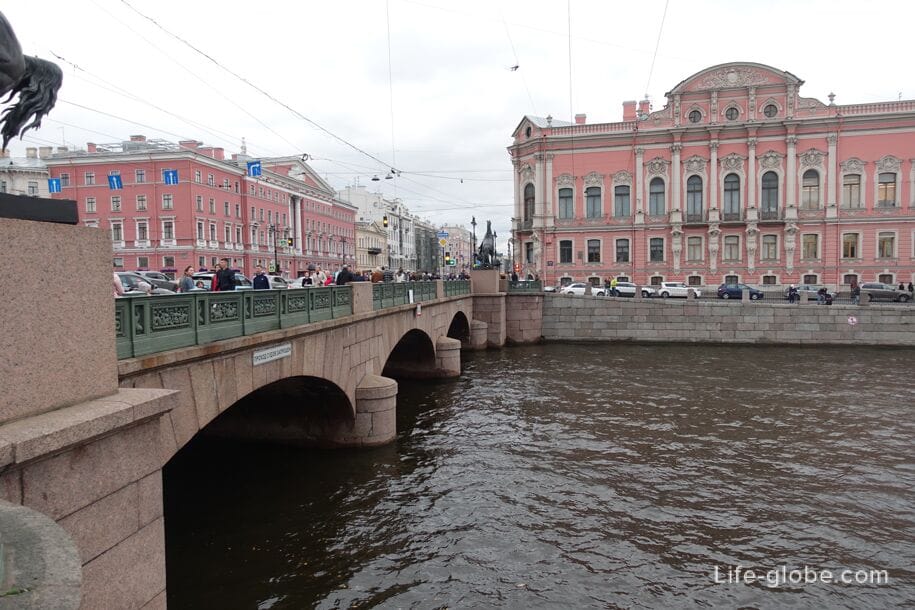
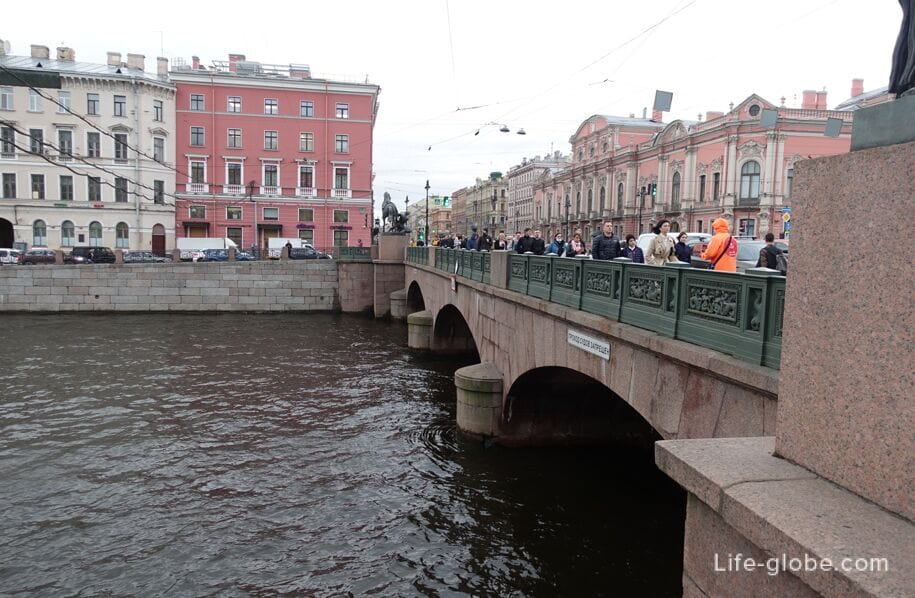
The bridge is decorated with four recognizable sculptural compositions - "The taming of the horse by man" or simply "The Taming of the horse", which are installed on both sides of the bridge on granite monumental pedestals.
The composite art groups were created by the baron and sculptor Peter Karlovich Klodt and installed on the bridge in 1841-1850.
During the Great Patriotic War, in 1941, sculptural groups of horses were removed from the pedestals of the bridge and buried in the garden at the Palace of Pioneers. On May 1, 1945, the sculpture groups were returned to their original places. The granite pedestals and cast-iron railings of the bridge, which were damaged during the war, were reconstructed.
Each of the sculptural groups depicts a rearing horse and a man holding it back.
As a model of horses, Clodt took the "Horses of Marly" - the works of the French sculptor Guillaume Coustoux, which are stored in the Louvre in Paris, and their copies, created by the sculptor Michel Bourbon, are installed on the Place de la Concorde at the beginning of the Champs-Elysees in Paris.


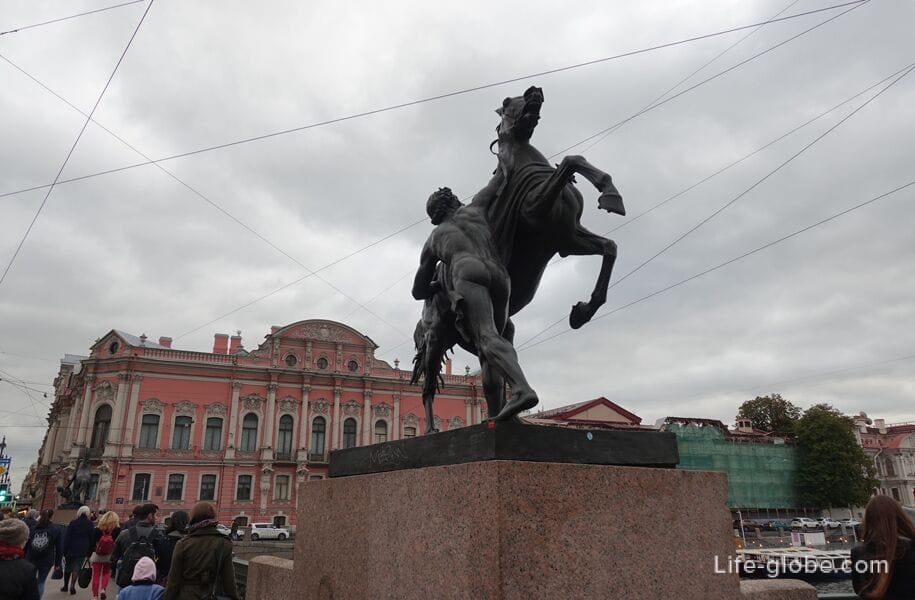
The pedestal of the north-western sculptural group is slightly damaged and there is a bronze plaque with the words: "These are the traces of one of the 148478 shells fired by the Nazis at Leningrad in 1941-44".
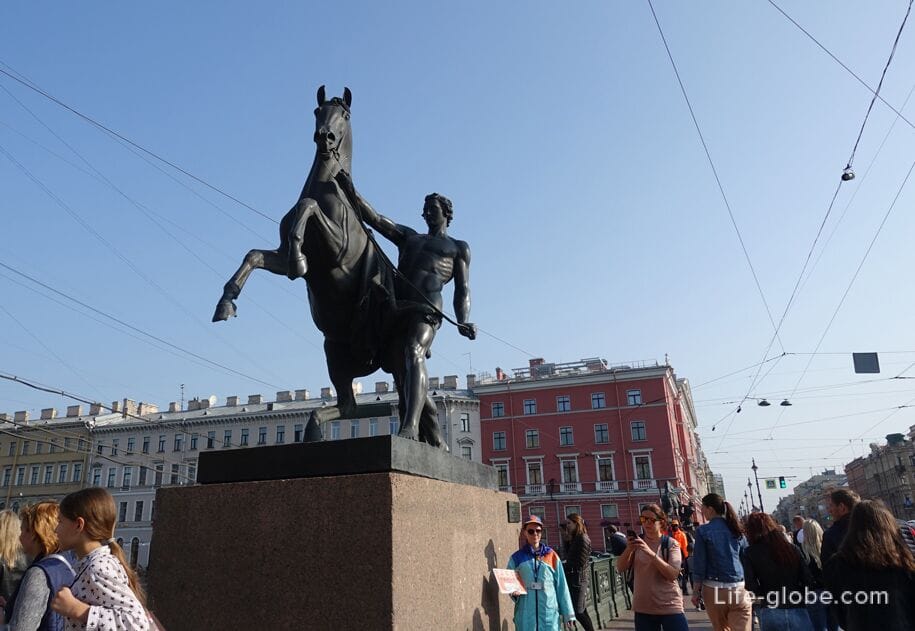
Anichkov Bridge is included in the list of cultural heritage sites of federal significance and is under state protection.
The sculptural compositions installed on the bridge are on the museum register in the State Museum of Urban Sculpture and are included in the Museum Fund of the Russian Federation.
The surrounding ensemble of the Anichkov Bridge
Anichkov Bridge is one of the main buildings of the architectural ensemble of Nevsky Prospekt.
On the 4 sides of the bridge, on Nevsky Prospekt, there are:
- on the north-western side of the Anichkov Bridge, at the corner of Nevsky Prospekt 66 and the Fontanka River embankment, there is a monumental building - the house of merchant Sharov, also known as the apartment house of P. I. Likhachev (after the names of the former owners).
Initially, on the site of the house (1720s) there was a wooden guardhouse guarding the drawbridge Anichkov bridge - at that time the city border passed here.
A three-storey stone house with a classical facade was built on this site in 1799-1806 for the merchant P.I. Sharov.
In 1877-1878, the new landlord P. I. Likhachev rebuilt the house according to the project of the architect Alexander Vasilyevich Ivanov, as a result of which the house became five-story and intended for renting furnished rooms. After the reconstruction, the building has acquired a modern eclectic look.
In the architecture of the facades of the house there are: rustics, shovels and pilasters, a variety of architraves, a magnificent frieze and many stucco details, as well as bay windows, balconies and hipped roofs.
Today, the house contains commercial premises, a salon-shop "Bookstore of Writers", which opened in the house in 1934, and residential premises.
Apartments (apartments) in the house can be booked for short-term stays (tourism, business): APART24 Nevsky avenue 66 apartment with two bedrooms, free Wi-Fi and private parking; Feelathome on Nevsky Apartment with free Wi - Fi and parking; Apartment on Nevsky 66 Apartment;
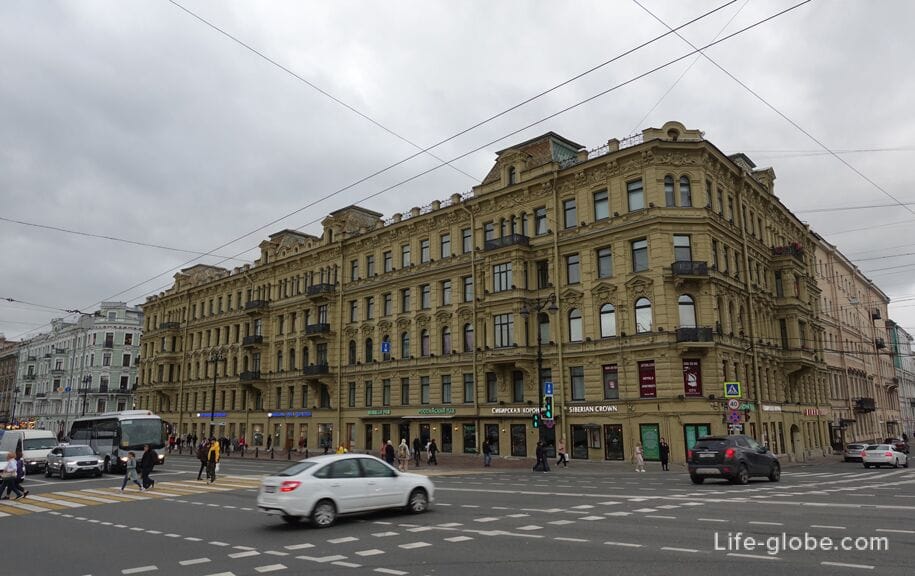
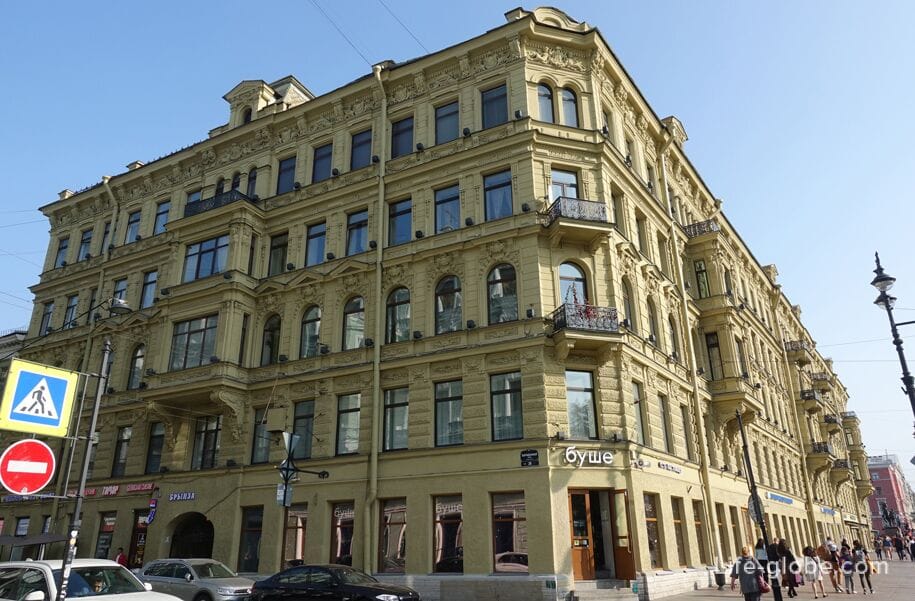
- on the south-western side of the Anichkov Bridge are the buildings of the complex of the same nameAnichkov Palace - one of the former imperial palaces, now a monument of Russian architecture of the 17th and 19th centuries.
The palace was erected starting in 1741 by the decree of the Empress Elizabeth Petrovna.
During the history, as a result of alterations and restorations, the appearance of the palace changed, it became more strict, and, eventually, it became an ensemble, the style of which was formed under the influence of successive eras, architectural styles and aristocratic owners. So, at various times, the Anichkov Palace belonged to the favorites of the Empresses Elizabeth Petrovna and Catherine II, became the residence of the imperial family and acted as gifts.
Today, the palace is a complex of buildings with an adjacent garden with pavilions.
Within the walls of the palace are: the theater and concert complex "Carnival", the St. Petersburg City Palace of Youth Creativity, the library and the Anichkov Lyceum.
For all comers, the palace offers sightseeing tours. Concerts, evenings and holidays are also held. Learn more about Anichkov Palace and Garden…
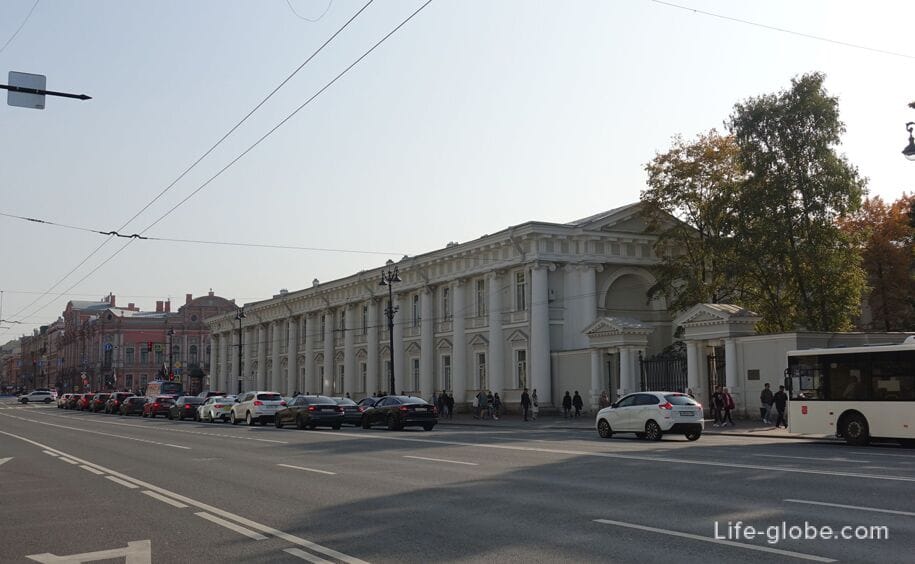
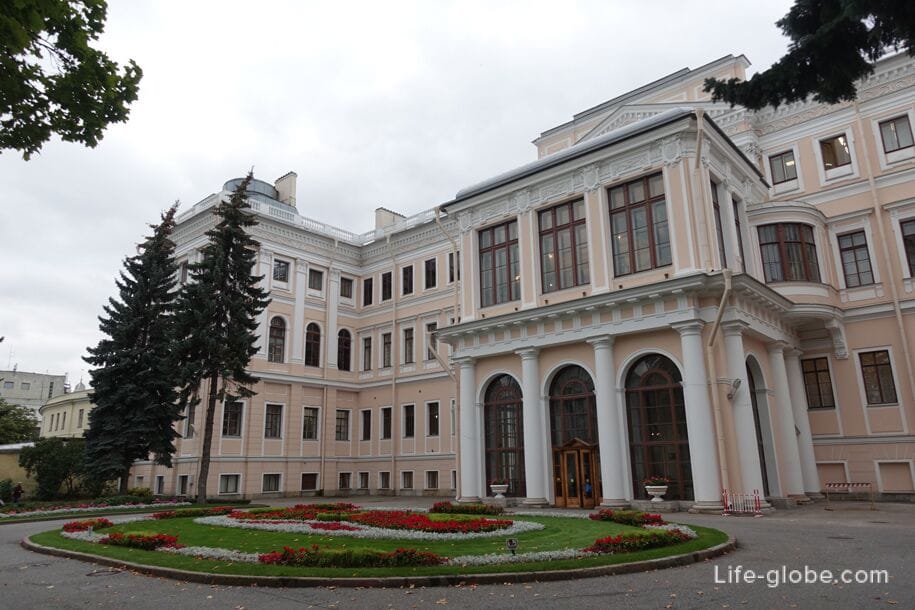
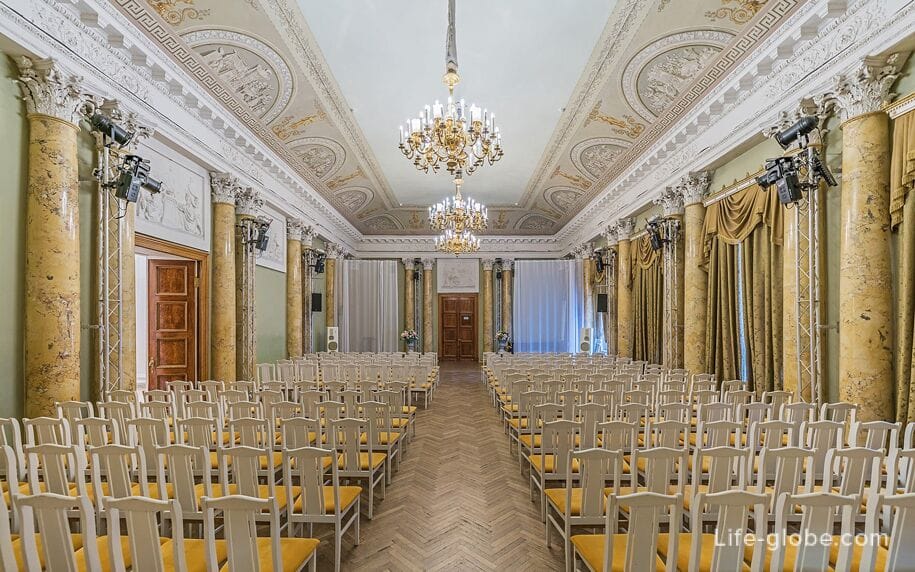
- on the north-eastern side of the Anichkov Bridge, at the corner of Nevsky Prospekt 68 and Fontanka River embankment 40, there is a historical building - Literary House or the house of Lopatin.
The first stone buildings on this site appeared in the second half of the 18th century. At the beginning of the 19th century, there were two four-story buildings on the site of the current site.
Since the 1820s, the building passed to the merchant F. I. Lopatin, under whom in 1839-1840, according to the project of the architect Vasily Yegorovich Morgan, a four-story building was added along the Fontanka Embankment. After its construction, the building became one of the largest apartment buildings in the capital - apartments were rented out to it.
After that, the building changed owners. In the 19th century, the house was inhabited by famous writers of that time, which gave the building its second name - "Literary House".
During the Great Patriotic War, part of the building was destroyed. After the reconstruction.
In 2011, due to accidents, the building was demolished, and then (2015) recreated with the addition of one floor and a repeat of the Soviet facade of the mid-20th century.
Today, the building houses commercial premises and houses organizations.
Flats (apartments) in the house can be booked for a short stay (tourism, business): apartments of "Fontanka 40" with three bedrooms, free Wi-Fi and Parking; Letyourflat apartments Apartments "Fontanka" with free Wi-Fi, Parking, and delivery of food and drinks in the room; apartment Nevskiy 68 Apartments with garden views and free Wi-Fi;
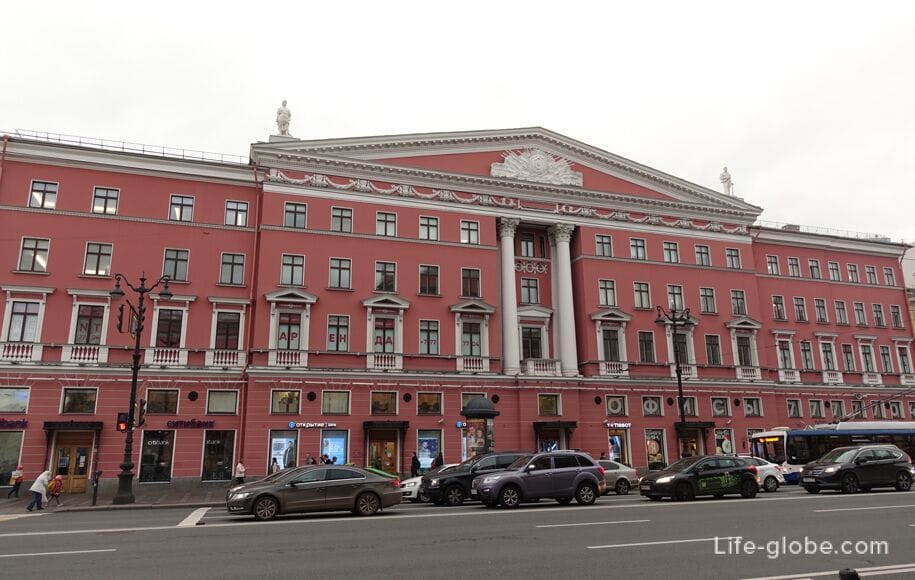
- on the south-eastern side of the bridge, at the corner of Nevsky Prospekt 41 and Fontanka River embankment 42, there is one of the most beautiful buildings on Nevsky Prospekt-the Beloselsky-Belozersky Palace-a former mansion and a monument of architecture in the new Baroque style.
The palace was built in 1847-1848 by order of Prince Esper Alexandrovich Beloselsky-Belozersky.
Since 1884, the palace was owned by Grand Duke Sergei Alexandrovich-the younger brother of Alexander III. Hence the second name of the palace - "Sergievsky".
Subsequently, the palace changed owners and its interiors changed.
Today, the Beloselsky-Belozersky Palace attracts attention with its bright color, columns with capitals, architectural decorations of window openings and large figures at the level of the first floor.
The palace is a place of culture - within its walls there is a museum, guided tours of the preserved interiors, as well as concerts, conferences, presentations and photo shoots. More about the Beloselsky-Belozersky Palace…
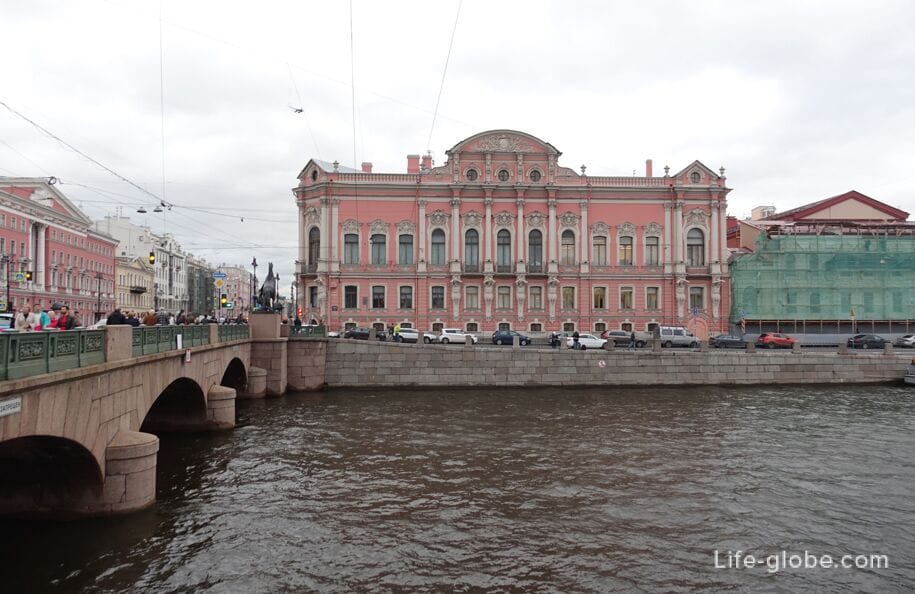
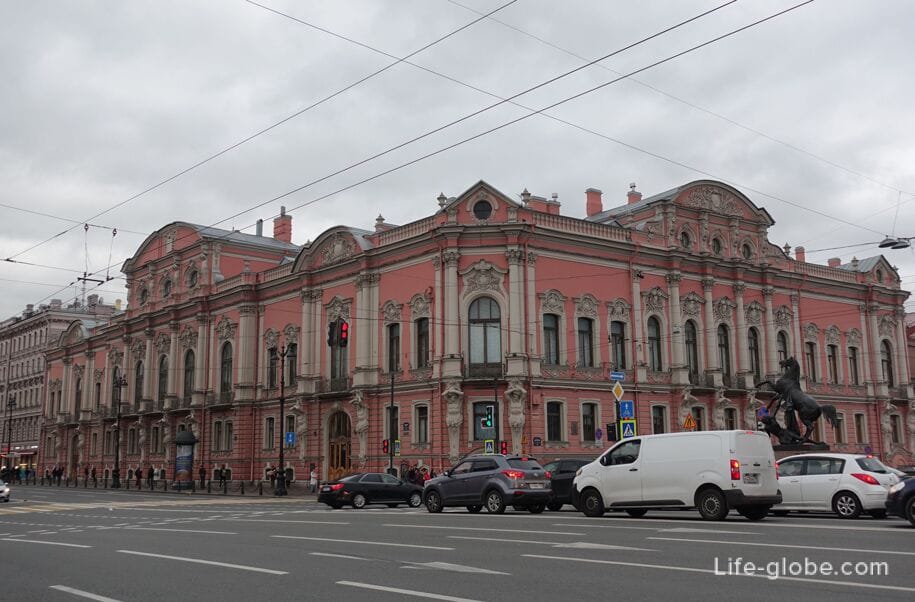
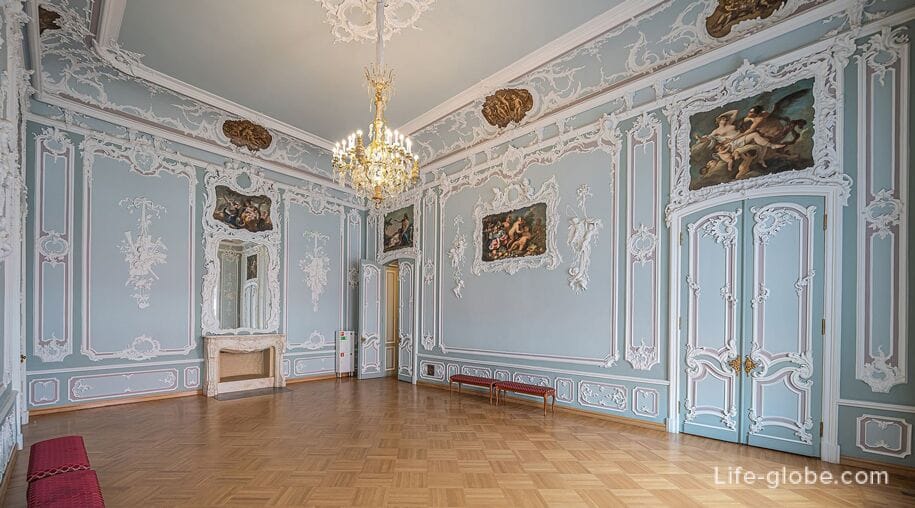
Views from the Anichkov Bridge
From the Anichkov Bridge, you can enjoy beautiful views of the Fontanka River, river embankments and historical buildings lined up in dense rows along the embankments, including:
- upstream: memorial sign "Blockade Ice Hole"; pier; Faberge Museum, located in the Shuvalov Palace; building Russian National Library; Sheremetyevo Palace (Fountain House) and Belinsky Bridge;
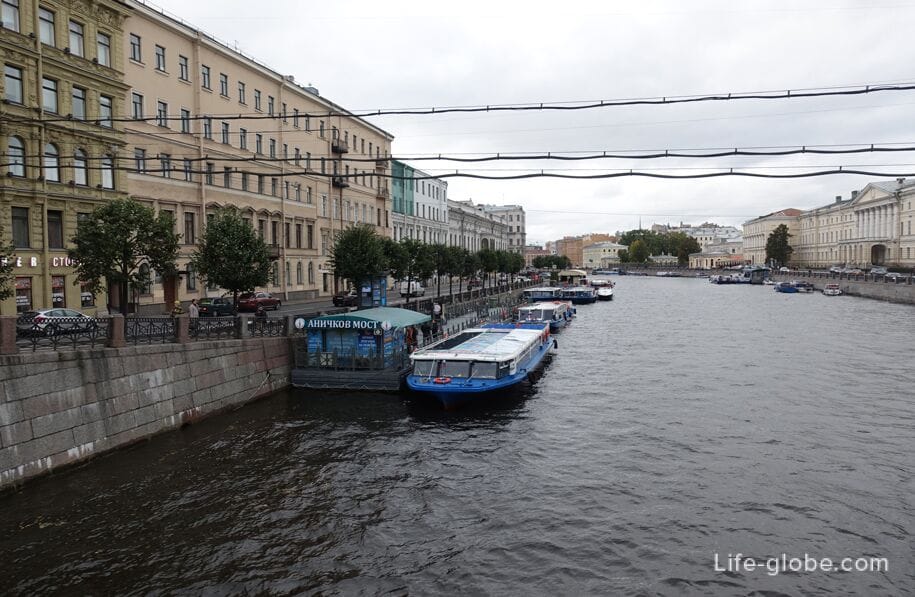

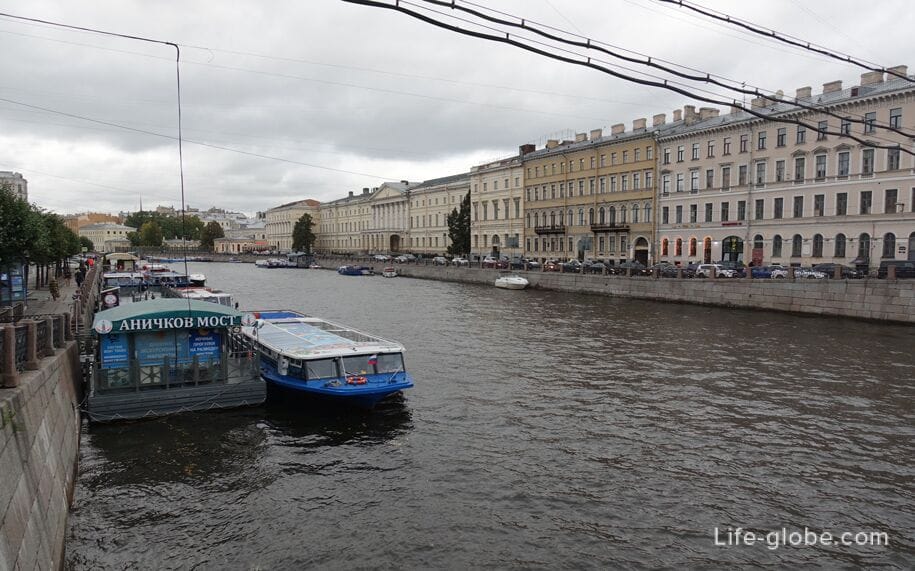
- downstream: Mayakovsky library and apartment buildings.
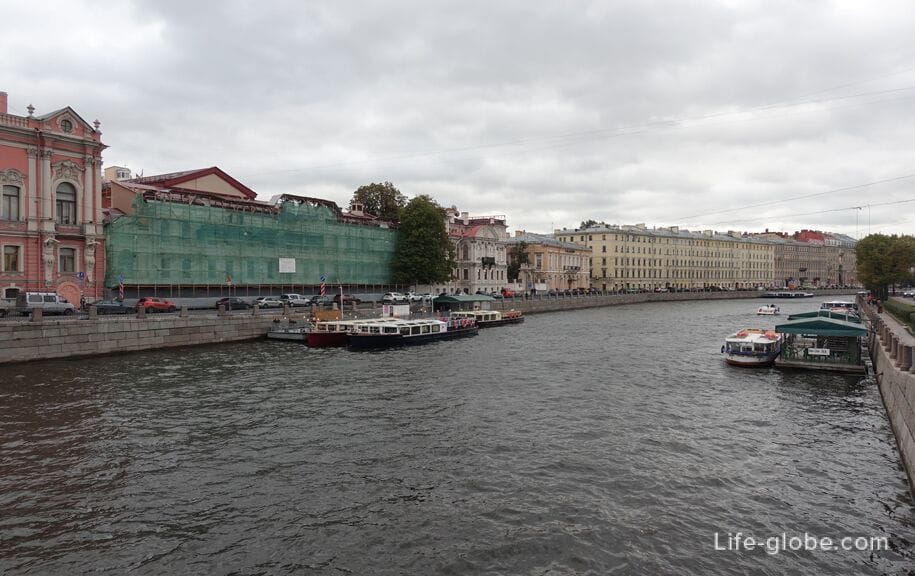
Practical information
Anichkov Bridge is publicly accessible. Open 24 hours a day.
Coordinates of the Anichkov Bridge: 59°56'00" N 30°20'36" E (59.933333, 30.343333).
Nearest metro stations: "Gostiny Dvor", "Nevsky Prospekt", "Mayakovsky" and "Ploshchad Vosstaniya".
All accommodation facilities in St. Petersburg, including in the city center and more remote from it, can be viewed and booked here




